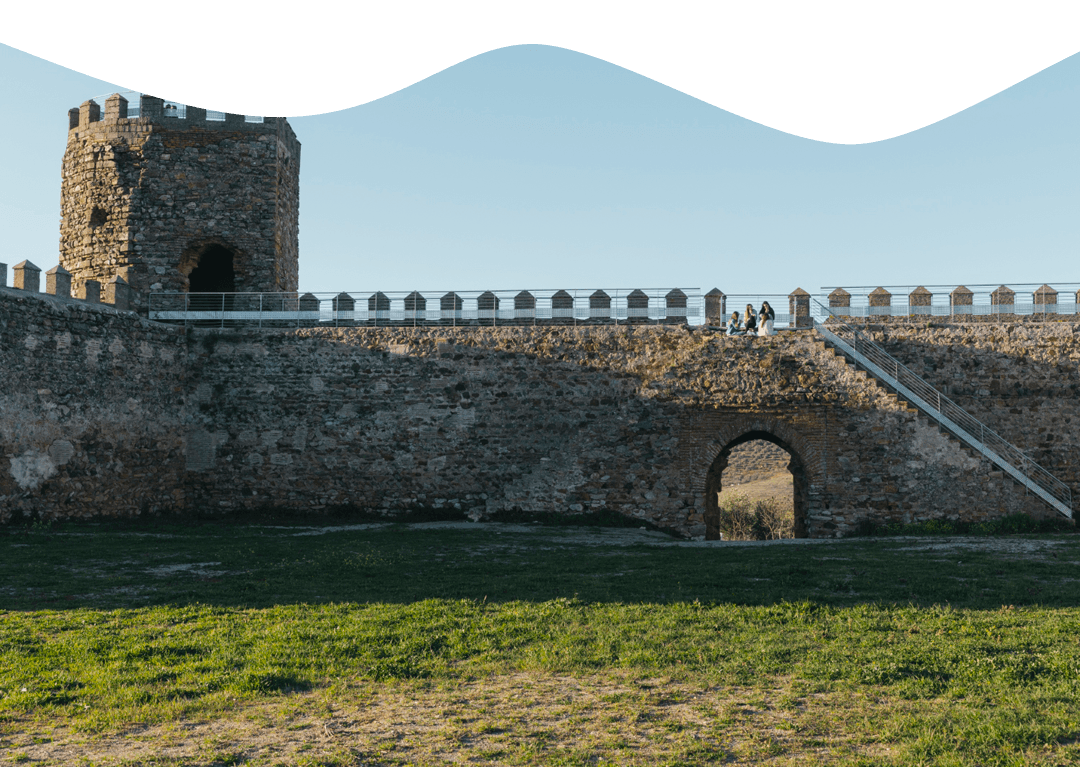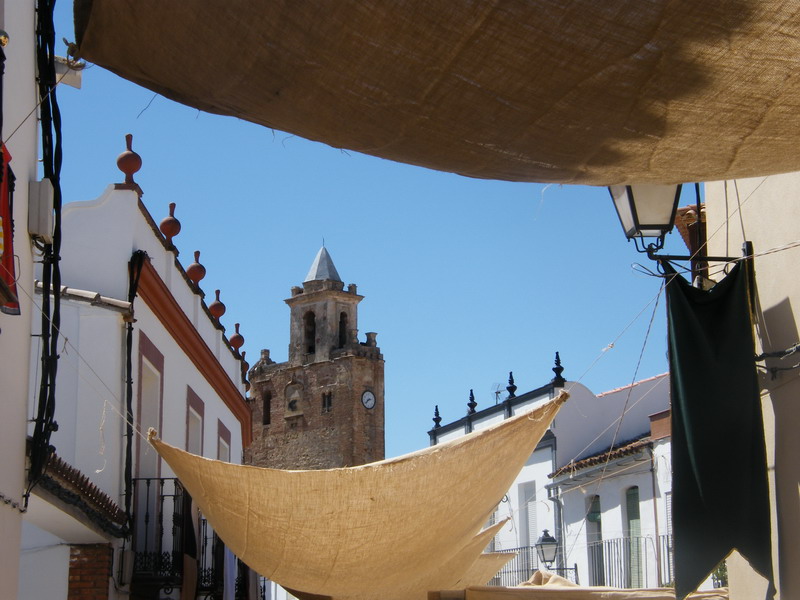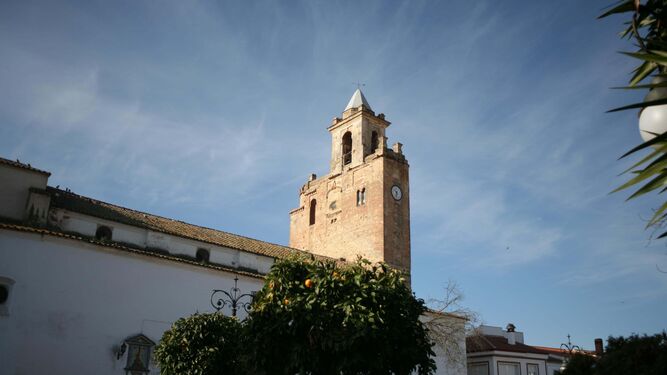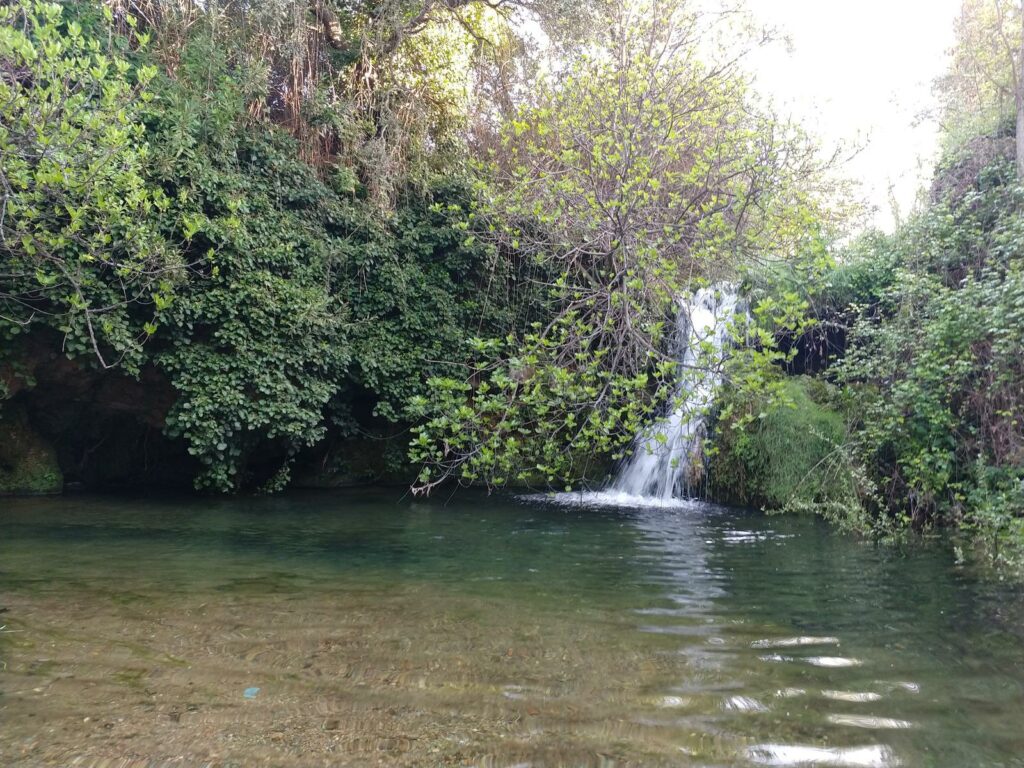



The medieval days of Alanís are the festivities that most unite the inhabitants of the village, thanks to which, for the last 17 years, every year all the inhabitants of the village get together to prepare 3 wonderful days, full of activities and celebrations. These festivities are held every year at the end of the summer.
The first stop is the Town Hall Square, where the official opening of these special festivities takes place and where, during the afternoon, there are calligraphy workshops, entertainment and the starting point of the Labyrinth of the Fauna. In the surrounding area, you can enjoy the medieval market and the attractions available such as: the opening of the medieval sports league, the flight of birds of prey and the opening of the street of fire.
Four minutes from the Town Hall Square is La Fuente De Santa Maria, a place where oriental dance comes to life with workshops and a special dance. There is also a world instrument workshop in this square.
If combat sports are your thing, I invite you to take Calle Fernández Espino from the Plaza del Ayuntamiento towards Paseo Alameda del Parral, where you can enjoy fencing classes for children, archery, and also the medieval fencing tournament held there.
Afterwards, to see the medieval theatre and the play “La Venganza de Don Mendo”, head to the Ermida del Parral. Head for the San Juan Chapel, about 350 metres from the starting point.
Finally, at the castle, you can watch the presentation of the Battle of Matamoros and enjoy the closing fireworks display.
It should be noted that the itinerary of these medieval days varies every year, so we invite you to keep an eye on the programme at the end of the summer.
A gastronomic journey through the Sierra Norte de Sevilla, its localities, places, corners, spots and establishments (drying sheds, restaurants and hotels).

It is a 100% cultural route with low difficulty. This route includes 58 towns in the province of Seville, in each of which there are Gothic-Mudejar vestiges worthy of a visit and in perfect condition. In many of the towns you can see monuments that will take you back to that period, a mixture of cultures that survived thanks to the sensitivity of our ancestors.
These are the 58 localities: Alanís, Alcalá de Guadaíra, Alcalá del Río, Alcolea del Río, La Algaba, Almensilla, Arahal, Aznalcázar, Aznalcóllar, Benacazón, Bollullos de la Mitación, Bormujos, Brenes, Burguillos, Camas, Cantillana, Carmona, Carrión de los Céspedes, El Castillo de las Guardas, Cazalla de la Sierra, Constantina, Coria del Río, El Coronil, Dos Hermanas, Écija, Espartinas, Estepa, Fuentes de Andalucía, El Garrobo, Gerena, Gines, Guadalcanal, Guillena, Huévar del Aljarafe, Lebrija, Lora del Río, Mairena del Alcor, Marchena, Los Molares, Montellano, Morón de la Frontera, Osuna, Palomares del Río, Pedrera, El Pedroso, Peñaflor, La Puebla de los Infantes, La Puebla del Río, El Real de la Jara, La Rinconada, Salteras, Sanlúcar la Mayor, San Nicolás del Puerto, Santiponce, Umbrete, Utrera, Villanueva del Río y Minas and El Viso del Alcor.
Alanís is notable for the Church of Nuestra Señora De Las Nieves, built during the 15th century, and which had to be reformed in 1757 due to damage caused by the Lisbon earthquake of 1755. The sober and characteristic exterior of this rectangular church is only the cover of an altarpiece full of art.
In 1982 it was declared a national historic-artistic monument by the Ministry of Culture.

Border, Santiaguista Priory and the Pilgrim’s Way to Santiago de Compostela. The frontier of Granada or the Banda Morista and the Santiaguista Priory of San Marcos de León shaped and established the ancient Jacobean route of the Camino de la Frontera.
Since the late medieval period, the Sierra Sur in Seville has been defined as a natural frontier outlined by its own mountain range and a military border of bastions and fortified towers scattered throughout the southern mountain range.
The towns through which it passes are Alanís, Alcolea del Río, Algámitas, La Campana, Cazalla de la Sierra, Los Corrales, Écija, Estepa, Guadalcanal, Lora de Estepa, Lora del Río, Martín de la Jara, Pedrera, El Pedroso, Pruna, El Rubio, San Nicolás del Puerto, El Saucejo, Villanueva del Río y Minas, Villanueva de San Juan and Cañada Rosal.
It has a medium difficulty and is 262 km long.

Alanís 2022. Todos los derechos reservados © Nattule. Desarrollo web NattuAR.
We firmly believe that the internet should be available and accessible to anyone, and are committed to providing a website that is accessible to the widest possible audience, regardless of circumstance and ability.
To fulfill this, we aim to adhere as strictly as possible to the World Wide Web Consortium’s (W3C) Web Content Accessibility Guidelines 2.1 (WCAG 2.1) at the AA level. These guidelines explain how to make web content accessible to people with a wide array of disabilities. Complying with those guidelines helps us ensure that the website is accessible to all people: blind people, people with motor impairments, visual impairment, cognitive disabilities, and more.
This website utilizes various technologies that are meant to make it as accessible as possible at all times. We utilize an accessibility interface that allows persons with specific disabilities to adjust the website’s UI (user interface) and design it to their personal needs.
Additionally, the website utilizes an AI-based application that runs in the background and optimizes its accessibility level constantly. This application remediates the website’s HTML, adapts Its functionality and behavior for screen-readers used by the blind users, and for keyboard functions used by individuals with motor impairments.
If you’ve found a malfunction or have ideas for improvement, we’ll be happy to hear from you. You can reach out to the website’s operators by using the following email
Our website implements the ARIA attributes (Accessible Rich Internet Applications) technique, alongside various different behavioral changes, to ensure blind users visiting with screen-readers are able to read, comprehend, and enjoy the website’s functions. As soon as a user with a screen-reader enters your site, they immediately receive a prompt to enter the Screen-Reader Profile so they can browse and operate your site effectively. Here’s how our website covers some of the most important screen-reader requirements, alongside console screenshots of code examples:
Screen-reader optimization: we run a background process that learns the website’s components from top to bottom, to ensure ongoing compliance even when updating the website. In this process, we provide screen-readers with meaningful data using the ARIA set of attributes. For example, we provide accurate form labels; descriptions for actionable icons (social media icons, search icons, cart icons, etc.); validation guidance for form inputs; element roles such as buttons, menus, modal dialogues (popups), and others. Additionally, the background process scans all of the website’s images and provides an accurate and meaningful image-object-recognition-based description as an ALT (alternate text) tag for images that are not described. It will also extract texts that are embedded within the image, using an OCR (optical character recognition) technology. To turn on screen-reader adjustments at any time, users need only to press the Alt+1 keyboard combination. Screen-reader users also get automatic announcements to turn the Screen-reader mode on as soon as they enter the website.
These adjustments are compatible with all popular screen readers, including JAWS and NVDA.
Keyboard navigation optimization: The background process also adjusts the website’s HTML, and adds various behaviors using JavaScript code to make the website operable by the keyboard. This includes the ability to navigate the website using the Tab and Shift+Tab keys, operate dropdowns with the arrow keys, close them with Esc, trigger buttons and links using the Enter key, navigate between radio and checkbox elements using the arrow keys, and fill them in with the Spacebar or Enter key.Additionally, keyboard users will find quick-navigation and content-skip menus, available at any time by clicking Alt+1, or as the first elements of the site while navigating with the keyboard. The background process also handles triggered popups by moving the keyboard focus towards them as soon as they appear, and not allow the focus drift outside of it.
Users can also use shortcuts such as “M” (menus), “H” (headings), “F” (forms), “B” (buttons), and “G” (graphics) to jump to specific elements.
We aim to support the widest array of browsers and assistive technologies as possible, so our users can choose the best fitting tools for them, with as few limitations as possible. Therefore, we have worked very hard to be able to support all major systems that comprise over 95% of the user market share including Google Chrome, Mozilla Firefox, Apple Safari, Opera and Microsoft Edge, JAWS and NVDA (screen readers), both for Windows and for MAC users.
Despite our very best efforts to allow anybody to adjust the website to their needs, there may still be pages or sections that are not fully accessible, are in the process of becoming accessible, or are lacking an adequate technological solution to make them accessible. Still, we are continually improving our accessibility, adding, updating and improving its options and features, and developing and adopting new technologies. All this is meant to reach the optimal level of accessibility, following technological advancements. For any assistance, please reach out to